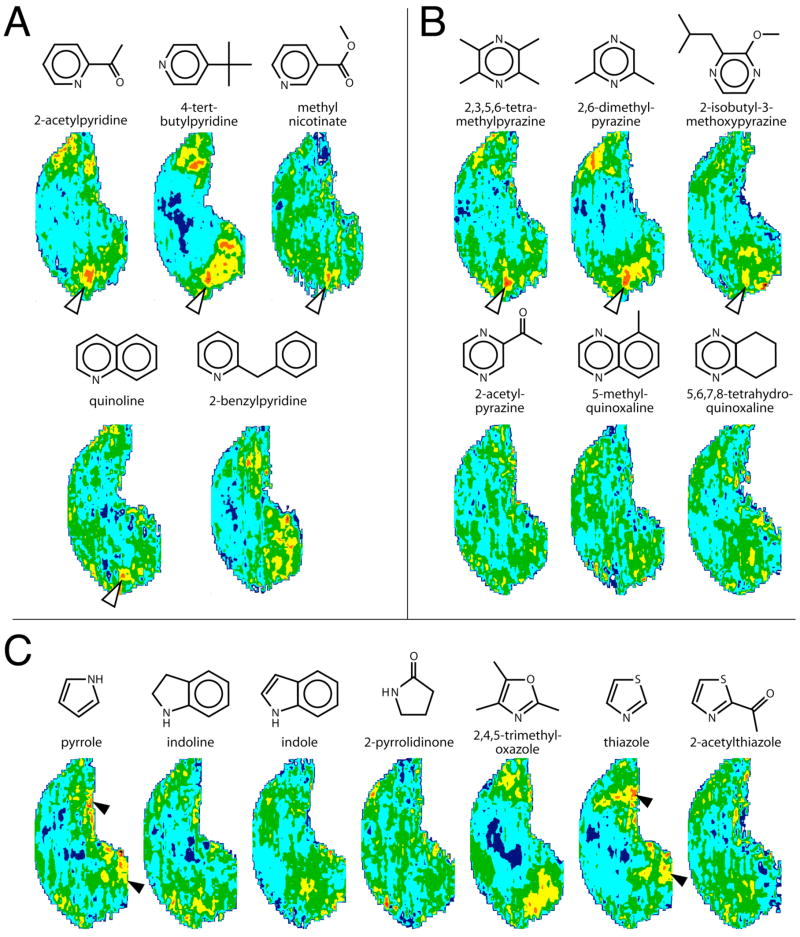Fig. 8.
Anatomically standardized contour charts showing relative 2-DG uptake across the glomerular layer in animals exposed to heterocyclic odorants in which nitrogen participates in the ring. Orientation and color scale are the same as for Figure 1. Charts represent z-score standardized data matrices averaged across different rats exposed to the same odorant condition. A: Patterns evoked by pyridine odorants, many of which activated glomeruli in a region also stimulated by benzene-containing aromatic odorants (open arrowheads). B: Patterns evoked by pyrazine odorants, which also activated glomeruli within the general aromatic-responsive region (open arrowheads). C: Patterns evoked by heterocyclic odorants containing nitrogen in five-membered rings. Two of these odorants activated posterior, midlateral and midmedial glomeruli (solid arrowheads) in a similar location to those activated by some lactones (Fig. 7A) and other small, hydrophilic odorants.

